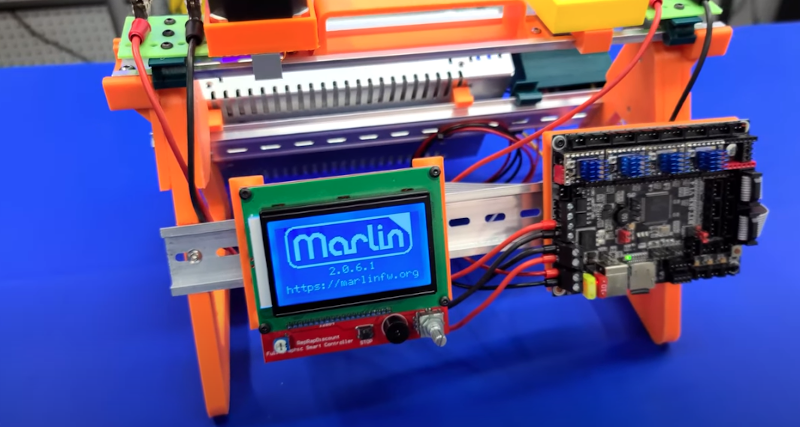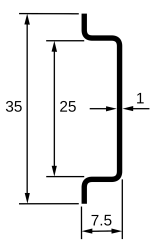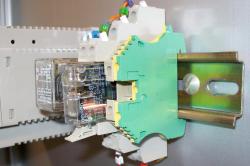

One of the great things about the Internet is it lets people find out what other people are doing even if they normally wouldn’t have much exposure to each other. For example, in some businesses DIN rails are a part of everyday life. But for a long time, they were not very common in hobby electronics. Although rails are cheap, boxes for rails aren’t always easy or cheap to obtain, but 3D printing offers a solution for that.
So while the industrial world has been using these handy rails for decades, we are starting to see hobby projects incorporate them more often and people like [Makers Mashup] are discovering them and finding ways to use them in projects and demonstrating them in this video, also embedded below.
If you haven’t encountered them yet, DIN rails are a strip of metal, bent into a particular shape with the purpose of mounting equipment like circuit breakers. A typical rail is 35 mm wide and has a hat-like cross-section which leads to the name “top hat” rail. A 25 mm channel lets you hide wiring and the surface has holes to allow you to mount the rail to a wall or a cabinet. These are sometimes called type O or type Ω rails or sections.
There are other profiles, too. A C-rail is shaped like a letter C and you can guess what a G section looks like, too. Rails do come in different heights, as well, but the 35 mm is overwhelmingly common. However, there are 15 mm rails and 75 mm rails, too.

Devices clamp against the “brim” of the top hat while the top of the hat is affixed to the wall or bulkhead. You’ll sometimes hear the width of a rail expressed in “modules.” A module is 17.5 mm wide, so a three-module device is 52.5 mm wide.
The DIN rail originated in Germany around 1928, with modern versions dating from the 1950s and in some environments they are everywhere. DIN, by the way, is an acronym for the originating German standards organization Deutsches Institut für Normung, but the rails also meet IEC and EN standards, today.
If you want to know more about DIN rails, we’ve looked at them in-depth. Combine them with off-the-shelf extrusions and 3D printing and you can make a variety of very sturdy structures.
0 Commentaires